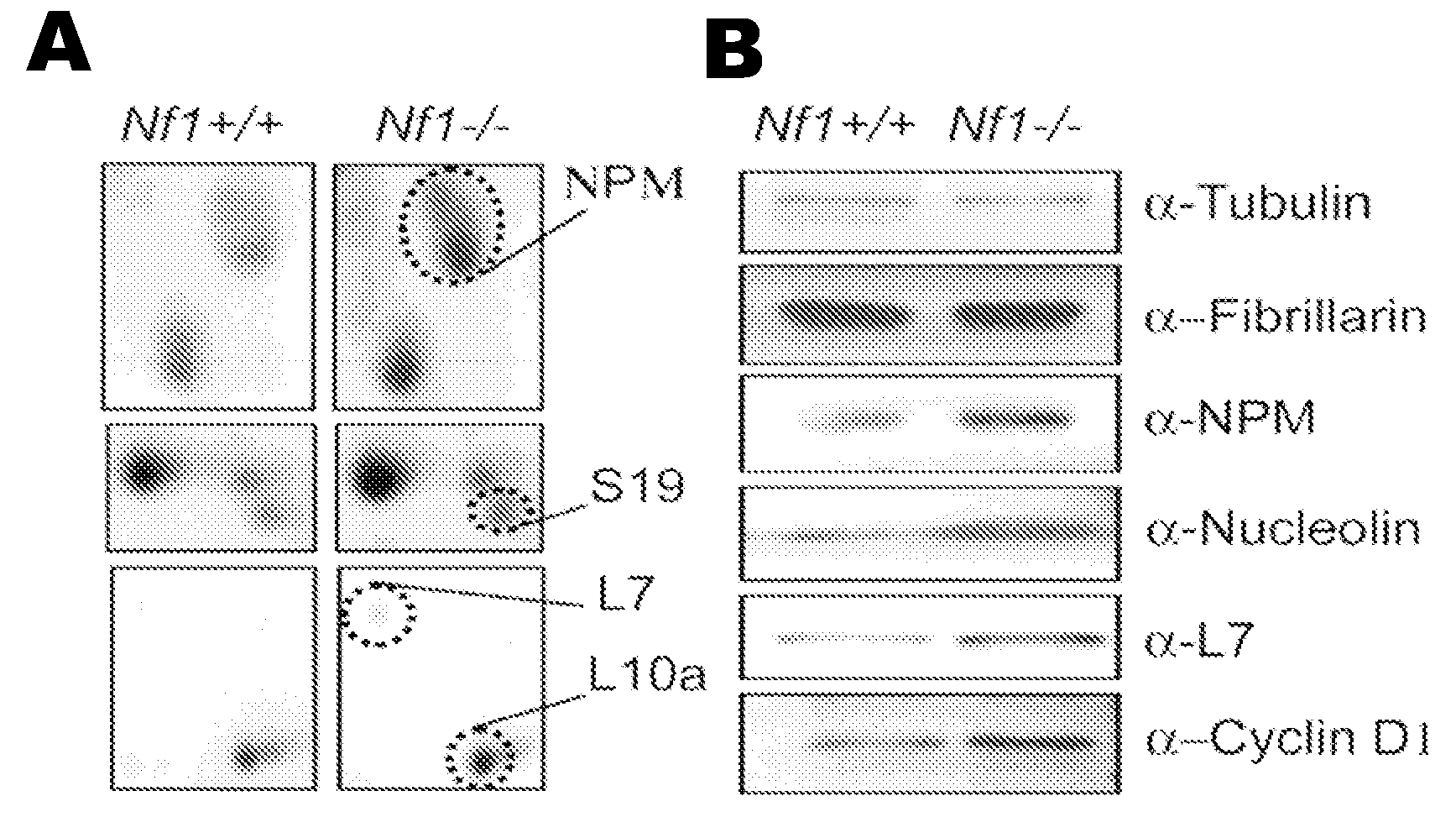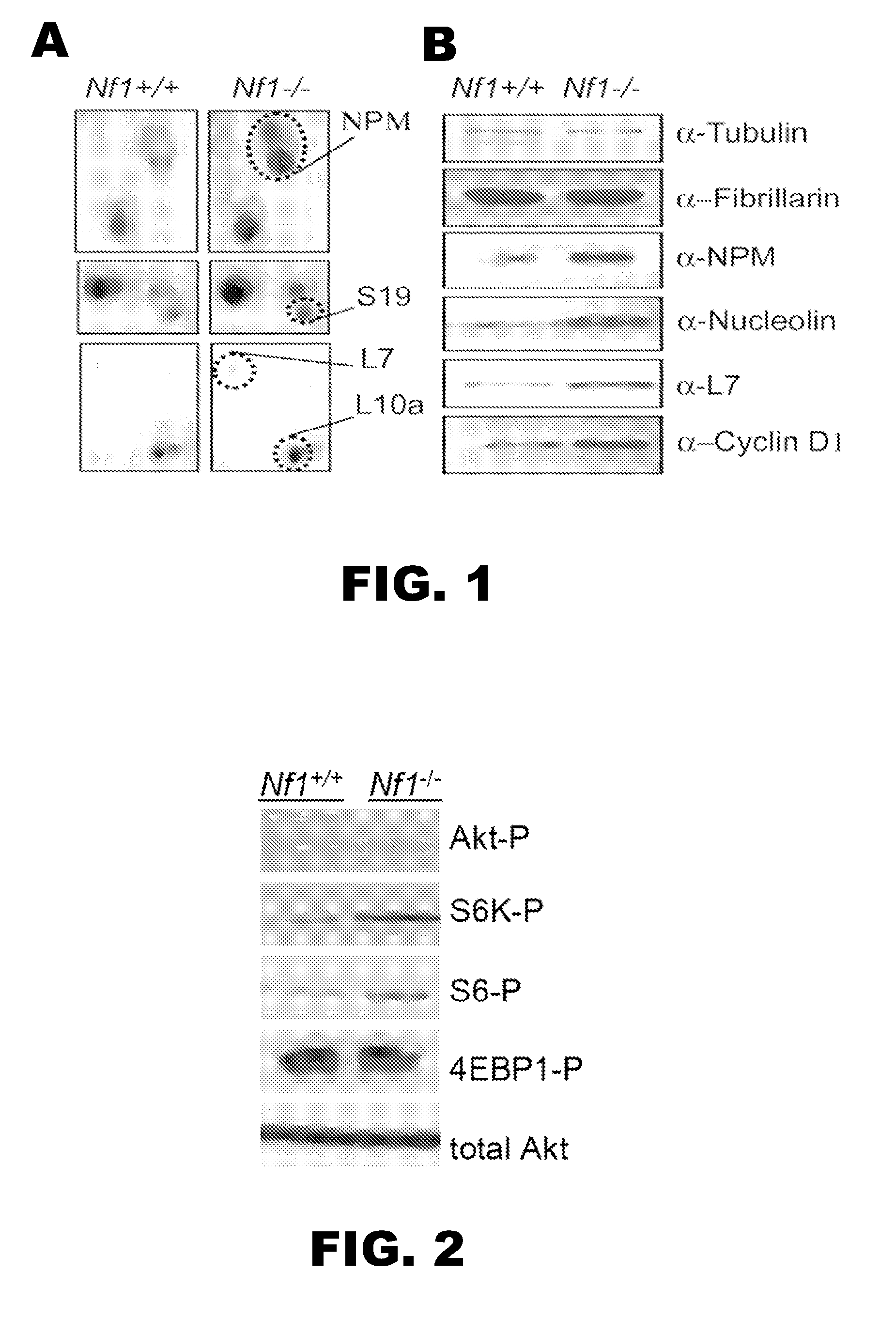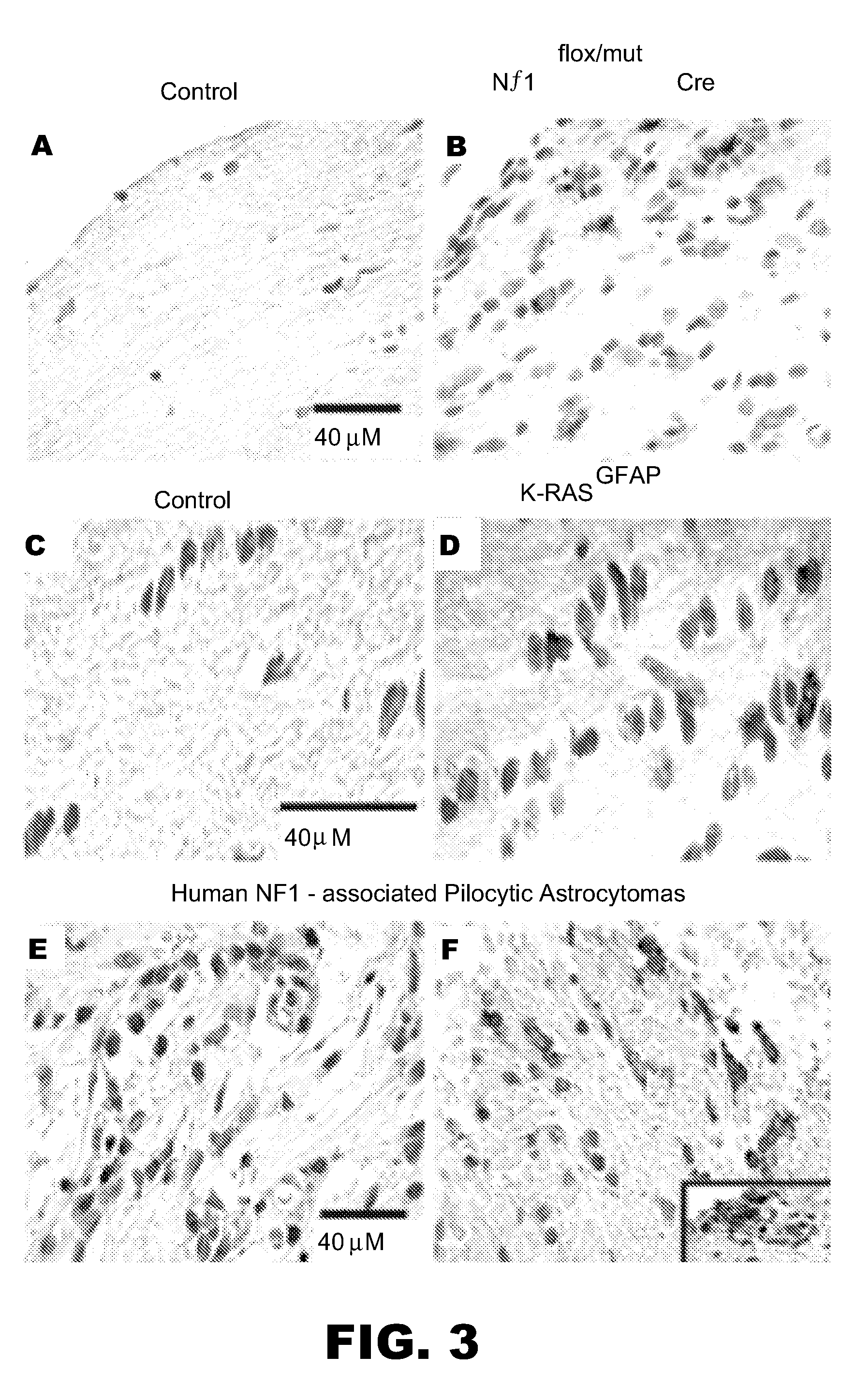Neurofibromin pathway modulators
a neurofibromatosis and pathway technology, applied in the field of neurofibromatosis treatment methods, can solve the problems of poor 5-year survival rate, precocious puberty or other neurological abnormalities, and inability to effectively treat the diseas
- Summary
- Abstract
- Description
- Claims
- Application Information
AI Technical Summary
Problems solved by technology
Method used
Image
Examples
example 1
NF1-Deficient Cells and Tumors Exhibit High Levels of mTOR Pathway Activation
[0095]Two-dimensional gel proteomic profiling was used to identify signaling pathways deregulated by neurofibromin 1 inactivation in astrocytes. These experiments demonstrated increased expression of numerous members of the ribosomal synthesis pathway, including NPM, a key regulator of ribosome maturation and export (FIG. 1). Since ribosomal synthesis is modulated by the mTOR / S6K pathway, the activation status of select members of the mTOR pathway was analyzed, including S6K1, S6, and 4EP-B1 using activation-specific antibodies (FIG. 2). Increased activation of S6K1 and S6, but not 4E-BP1, in neurofibromin 1 deficient astrocytes was observed, suggesting that the S6K1 / S6 arm of the mTOR pathway was hyperactivated. To provide an in vivo correlate for these in vitro findings, mTOR pathway activation was examined in optic glioma arising in neurofibromin 1 genetically-engineered mice (GEM) and in human NF1-assoc...
example 2
Rapamycin Inhibition of mTOR Pathway Activation Blocks Neurofibromin 1 Deficient Cell Growth
[0096]Pharmacologic inhibitors that block mTOR activation include rapamycin and related synthetic derivatives (e.g., RAD001, CCI-779). First, it was demonstrated that rapamycin inhibits mTOR pathway activation in neurofibromin 1 deficient astrocytes. In these experiments, complete inhibition of S6 activity was observed using phospho-specific antibodies after treatment with 1 nM rapamycin (FIG. 4).
[0097]Second, this low dose of rapamycin was shown to completely inhibit the proliferative advantage of neurofibromin 1− / − astrocytes in vitro without any effect on the growth of wild-type (neurofibromin 1+ / +) astrocytes (FIG. 5). Finally, a human NF1-associated MPNST cell line (ST88-14) was engineered with a luciferase expression construct to allow for in vivo visualization and in vitro rapid analyses of cell growth (FIG. 6). Using the ST88-14-luc cell line, treatment with rapamycin effectively inhi...
example 3
Neurofibromin Regulation of mTOR Signaling
[0098]Evidence exists for direct activation of mTOR signaling by Akt as well as indirect activation of mTOR by Akt through the tuberous sclerosis complex (TSC) / Rheb pathway. Studies have shown that the mTOR activation resulting from neurofibromin loss in astrocytes can be reversed by restoring NF1-GAP activity (NF1 GRD), blocking K-RAS activity (K-RASN17), or inhibiting PI-3K activation of Akt. In these experiments, replacement of the GAP domain in neurofibromin 1 deficient astrocytes reduced S6 activation levels to normal (FIG. 7a). Similarly, the increased S6 activation in neurofibromin 1 deficient astrocytes was reversed upon the introduction of a dominant inhibitory K-RAS molecule (FIG. 7b) or inhibition of PI-3K using the LY294002 compound (FIG. 4b). Collectively, these results suggest that neurofibromin regulates mTOR signaling through RAS / Akt.
[0099]While one report found that neurofibromin 1 regulation of mTOR signaling involved the T...
PUM
| Property | Measurement | Unit |
|---|---|---|
| molecular weight | aaaaa | aaaaa |
| molecular weight | aaaaa | aaaaa |
| molecular weight | aaaaa | aaaaa |
Abstract
Description
Claims
Application Information
 Login to View More
Login to View More - R&D
- Intellectual Property
- Life Sciences
- Materials
- Tech Scout
- Unparalleled Data Quality
- Higher Quality Content
- 60% Fewer Hallucinations
Browse by: Latest US Patents, China's latest patents, Technical Efficacy Thesaurus, Application Domain, Technology Topic, Popular Technical Reports.
© 2025 PatSnap. All rights reserved.Legal|Privacy policy|Modern Slavery Act Transparency Statement|Sitemap|About US| Contact US: help@patsnap.com



